by THERIZ LIZEL R. SILVANO
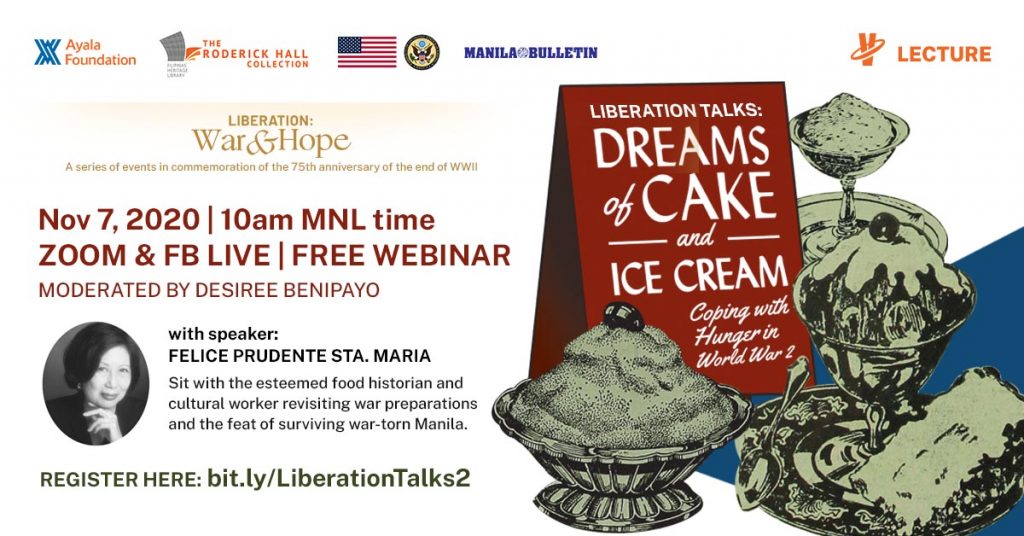
WARS took place in several nations and in different environments. Soldiers, families, reformers, and survivors were carrying values and beliefs of their own, with a hopeful perspective that their needs and aspirations would soon be met. They are the affirmation that history truly happened, and that they brought changes in society that can still be observed today.
The people of the past have battled for the principles that concern not only their lives but also the lives of others. Indeed, wars have brought chaos and change, but above all, the aftermath of wars brought starvation and scarcity, especially during the Second World War in the 1940s.
When war emerges, the government does not only need strong survivor instincts but faith that the Filipino citizen will do what’s best for the common good. This is one of the key takeaways from the Filipinas Heritage and Library’s virtual webinar Liberation Talks: Dream of Cake and Ice Cream: Coping with Hunger in World War II. The two-hour online discussion revisits the Philippine food culture and the significant role of women during the Second World War.
The virtual talk last Nov. 7 was developed by featured speaker Felice Prudente Sta. Maria, a food historian and a cultural worker, who talked about food-making during wartime and how women alleviated hunger through their knowledge in food, kitchen, and health.
The Liberation Talks highlights the stories of how women’s culinary experiences helped strengthen the country.
The Yulo Sisters
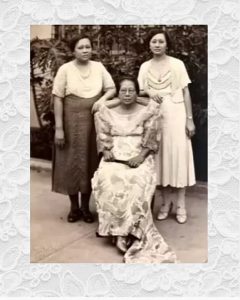
Sta. Maria first gave a brief history of a distant family of hers. Gabina de Yulo, the mother of the family, had two daughters named Brigida and Concepcion who soon married two Negrense cousins. They usually gather every Sunday after church during lunchtime, a time where they will talk about current events.
Despite how aggravating the news was, their lunches always ended with home-baked cakes and ice-cream. The children were requesting to buy Magnolia ice cream instead of making it at home, so they could avoid making a mess with the ice-cream churner.
This simple routine of the family serves as a picture of how households eat and spend time as they value their mealtimes together.
“Cooking and eating were meant to unite a family,” Sta. Maria said.
She also mentioned that during the family’s regular lunches, only happy stories were allowed to be told. Her Lola Gabina always encourages everyone to avoid talking about sorrow and depression.
“Lola Gabina would hush anyone attempting to bring intrigue, anxieties, stubbornness, gossip, and sadness to the table,” she shared.
In truth, it is a depiction of an ideal family that Filipinos aspire to have— a family with warmth and heartfelt traditions that aim to be observed and passed to their next generation.
Home economics education
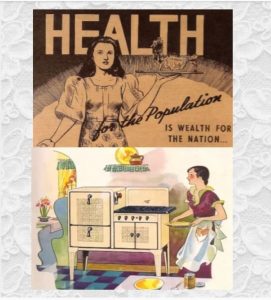
As said by Sta. Maria, home economics nourished women’s ability to apply science in healthy cooking and sanitation. It centered on maternity values, traditions, and practices. Modern families learned that the purpose of home economics was to deliver education on household management and good public health. Likewise, the nation perceived home economics as its ‘health and wealth.’
It also motivated women to create and bring food to their education centers, which led them to wish for a refrigerator and a stove with a built-in oven.
This was important to them since these types of equipment can help them store and freeze food as well as cook and bake at the same time.
In addition, home economics in 1911 taught hygienic canning and bottling. Women learned how to store and preserve food before and during the war.
Beyond the kitchen skills and mastery, home economics introduced how households should manage their kitchens and serve healthy food. Furthermore, it educated them on how to survive the arriving war.
Food security during World War II

Food security was everyone’s major concern from Dec. 16, 1941, until Sept. 2, 1945.
With the war coming, households in both cities and provinces were encouraged to grow fruits and vegetables. Sta. Maria shared how nearly 260,000 fighters underground were fed by provincial homes by the end of the war. Beans, a staple at that time, were highly important.
“Women have been taught that the beans are important because they provide protein; they were the substitute for meat and fish,” Sta. Maria said.
Back then, families in Manila were not able to cook and grow food unlike in the provinces due to the strict food farming policies of the Japanese, who attempted to introduce fast-growing Taiwanese Horai rice. Instead, they have an emergency stock of food, which usually includes stock of rice, canned salmon and sardines, biscuits, Campbell’s soup, dried meat or tapa, peanut butter, and more.
Those who lived in jungles and forests benefitted from knowing how their ancestors ate. They hunted their food, including deers, carabaos, rats, snakes, bats, ducks, field mice, and other kinds of animals.
In today’s time, many may refuse to hunt and eat those who belong in the wildlife but during wars, eating these kinds of mammals is already a luxury and a means to survive.
The end of World War II in the Philippines

The Second World War may have ended in 1945 but in 1943, it was just the start of the destabilization of food security in the Philippines. The costs of food soared as rice harvests and food crops were destroyed. This, of course, included poultries and piggeries.
This catastrophic event possessed many details and stories from the Filipino people. Men were perceived as the heroes of the land, but when one truly looks within the torn homes and destroyed communities, they would understand how women played a part in saving the country.
Eleven months after World War II ended in the Philippines, the newly elected President Manuel A. Roxas encouraged citizen action to save the country from devastation.
Manuel Roxas’s administration alleviated the problem as he established feeding programs to quiet the public’s stomachs and anger. The government was supported by women who empowered their civic spirit, including the National Federation of Women’s Clubs, Catholic Women’s League, Young Women’s Christian Association, and other groups of ‘cooperating institutions’ of women and girls.
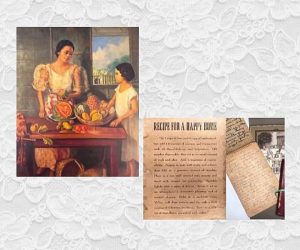
This shows how Filipino women tied themselves together to form powerful groups that curtailed the hunger of their fellow countrymen. History also proves that women’s participation in building the new Philippine Republic helped strengthen homes and communities.
Sta. Maria said that the home was the heart of the Philippines as the country rebuilds itself. The war brought Filipinos back together and motivated them to secure and value their families and neighbors even more.
“I’d like to believe that women were and still are the nature contributors of the Philippines and the Filipino citizens’ strength,” Sta. Maria proudly shared.
Sta. Maria’s concluding remarks may be perceived as a common pearl of wisdom, but it holds a powerful message that the people of today should learn and appreciate.
After all, Filipinos today are already marking women’s heroic acts and movements and it is a remarkable phenomenon that is worth celebrating every single day. F

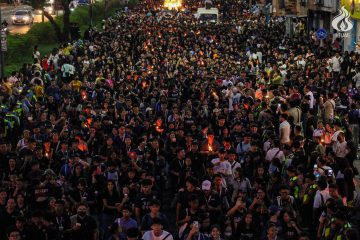

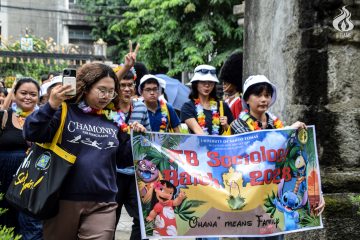
💙